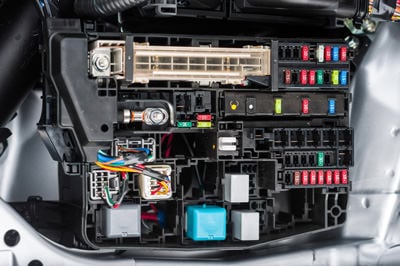Business-focused mechanical engineering industry support for your growth.
Business-focused mechanical engineering industry support for your growth.
Blog Article
Top Tips for Effective Electrical System Troubleshooting
Troubleshooting electric systems needs a systematic method, grounded in a comprehensive understanding of electrical concepts and security protocols. By acquainting oneself with circuit components, utilizing vital devices, and sticking to a structured examination approach, specialists can efficiently identify and fix issues. The subtleties of efficient fixing expand beyond mere technological expertise; understanding exactly how to record searchings for and prioritize security can considerably influence end results. As we check out these vital aspects further, it comes to be clear that mastering this procedure is not just beneficial but necessary for success in the field.
Understand the Fundamentals
Understanding the basics of electric systems is vital for effective troubleshooting, as a strong foundation permits professionals to detect and settle problems extra effectively. A comprehensive understanding of electrical principles, such as voltage, current, resistance, and power, is vital in recognizing the origin of issues. Voltage is the electrical potential difference that drives existing through a circuit, while resistance opposes the circulation of existing, impacting the total capability of the system.
Knowledge with circuit parts, including resistors, capacitors, diodes, and switches over, is additionally critical. Each component plays a distinct role in circuit habits and can influence performance when malfunctioning. Furthermore, comprehending series and identical circuit configurations is crucial, as these setups affect the circulation of voltage and current within the system.
Specialists must be mindful of prospective risks, such as shock and brief circuits, to apply secure troubleshooting practices. By grasping these fundamental ideas, professionals enhance their ability to conduct effective diagnostics and repair work, eventually leading to enhanced efficiency and integrity of electrical systems (electrical system troubleshooting).
Gather Necessary Tools
Effective troubleshooting of electric systems calls for the ideal set of devices to diagnose and fix concerns precisely. Vital tools consist of a multimeter, which gauges voltage, present, and resistance, allowing for specific evaluations of electrical components.
In addition, protected hand devices such as screwdrivers, pliers, and cord strippers are critical for safely controling electric links. It is likewise advisable to have a circuit tester on hand to verify the existence of voltage in electrical outlets and wires. For more facility systems, a thermal imaging electronic camera can aid spot overheating elements, indicating prospective failures.

Follow an Organized Strategy
Having actually gathered the proper devices, the next action in troubleshooting electrical systems is to comply with other a systematic strategy. A methodical technique guarantees that service technicians can determine faults effectively and accurately, lessening downtime and preventing unneeded repairs.
Begin by assessing the system's schematic diagrams and specifications. This involves checking each element methodically, starting from the power source and working towards the tons.
Make use of screening devices, such as multimeters and oscilloscopes, to gather unbiased information about voltage, existing, and resistance at various factors within the system. This empirical evidence will guide your troubleshooting initiatives and aid to verify or eliminate possible reasons of failure.
Furthermore, take into consideration environmental variables that may affect the system's efficiency, such as temperature level variations or dampness ingress. A comprehensive assessment of wiring, links, and parts will make sure that all possibilities are accounted for.
Paper Your Findings
Complete documentation is crucial in the troubleshooting procedure of electrical systems. Precise documents boost the effectiveness of determining repeating problems and additional hints promote interaction among employee. Each finding ought to be meticulously noted, including symptoms observed, examinations carried out, and the end results of those examinations. electrical system troubleshooting. This method not only help in understanding the source of the issue however additionally serves as a reference for future repairing efforts.

Additionally, preserving a log of components changed or repair work done is important. This details sustains supply management and can assist assess the longevity and integrity of certain parts.
Ultimately, the documentation process need to be comprehensive yet concise, enabling simple access and testimonial - electrical system troubleshooting. By focusing on detailed paperwork, professionals can produce a beneficial data base that not just aids in present troubleshooting however additionally encourages future upkeep efforts, consequently improving total system integrity

Prioritize Safety Procedures
Recognizing the intrinsic risks connected with electric systems is essential for making certain safety throughout troubleshooting. Electrical shock, burns, and devices damages are simply a few of the prospective threats that specialists deal with. Prioritizing safety and security measures is not just a legal obligation however also a moral critical that safeguards both the technician and the surrounding atmosphere.
Before starting any kind of troubleshooting task, service technicians need to don ideal individual protective tools (PPE), including insulated gloves, shatterproof glass, and flame-resistant clothing. Making certain that the workplace is completely dry and without mess can considerably lower the danger of crashes. It is important to de-energize circuits prior to starting any kind of work, verifying that they are not live via the usage of a multimeter or voltage tester.
Developing clear communication protocols with team participants is likewise crucial; this makes certain that every person understands potential dangers and the standing of the electric system being worked my response with. Last but not least, having an emergency situation response strategy in position can show vital in the event of an event. By focusing on safety steps, professionals can effectively minimize dangers and foster a safer work environment.
Conclusion
Reliable electrical system fixing relies upon a thorough understanding of essential concepts and a systematic technique. By collecting important tools, adhering to methodical analysis techniques, and diligently recording findings, the troubleshooting process becomes extra efficient and trusted. Focusing on safety measures makes sure the wellness of individuals included and the honesty of the electrical system. Implementing these strategies will certainly boost the troubleshooting experience, bring about quicker resolutions and enhanced operational efficiency in electrical systems.
Report this page